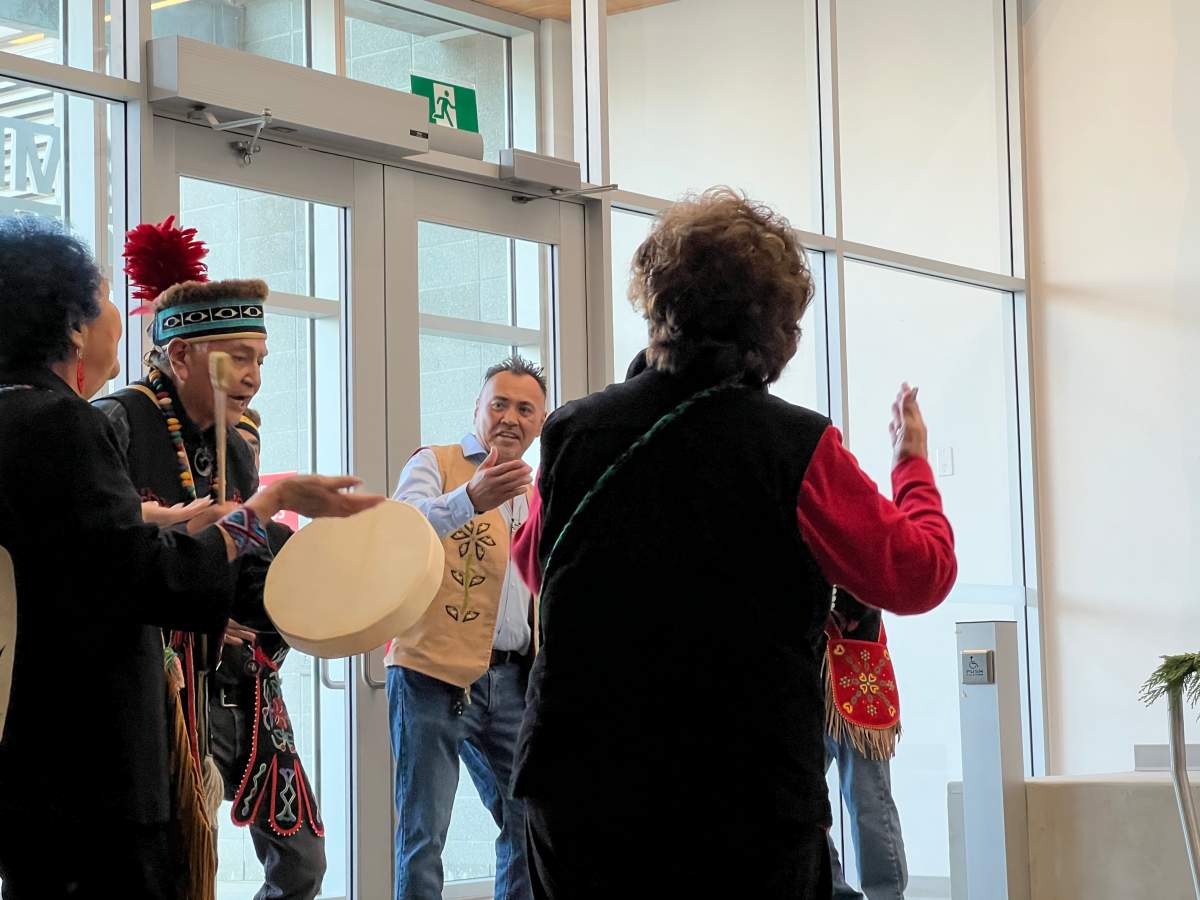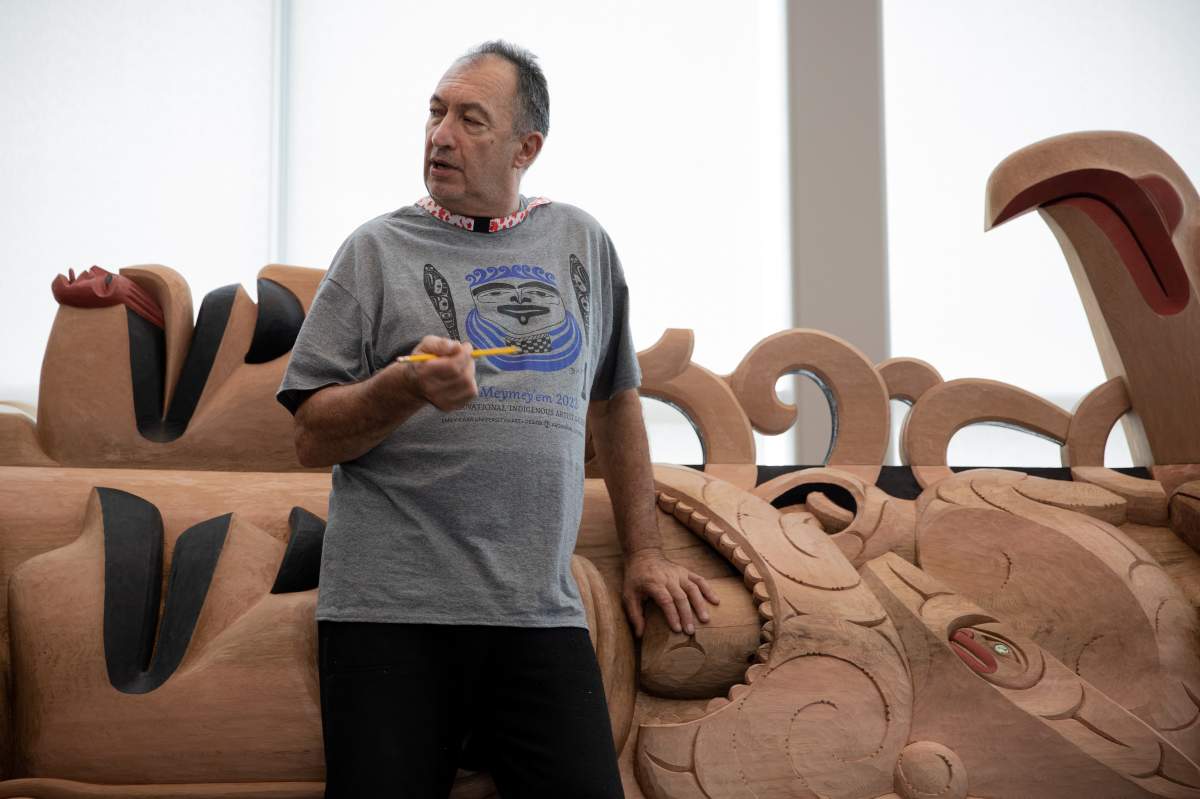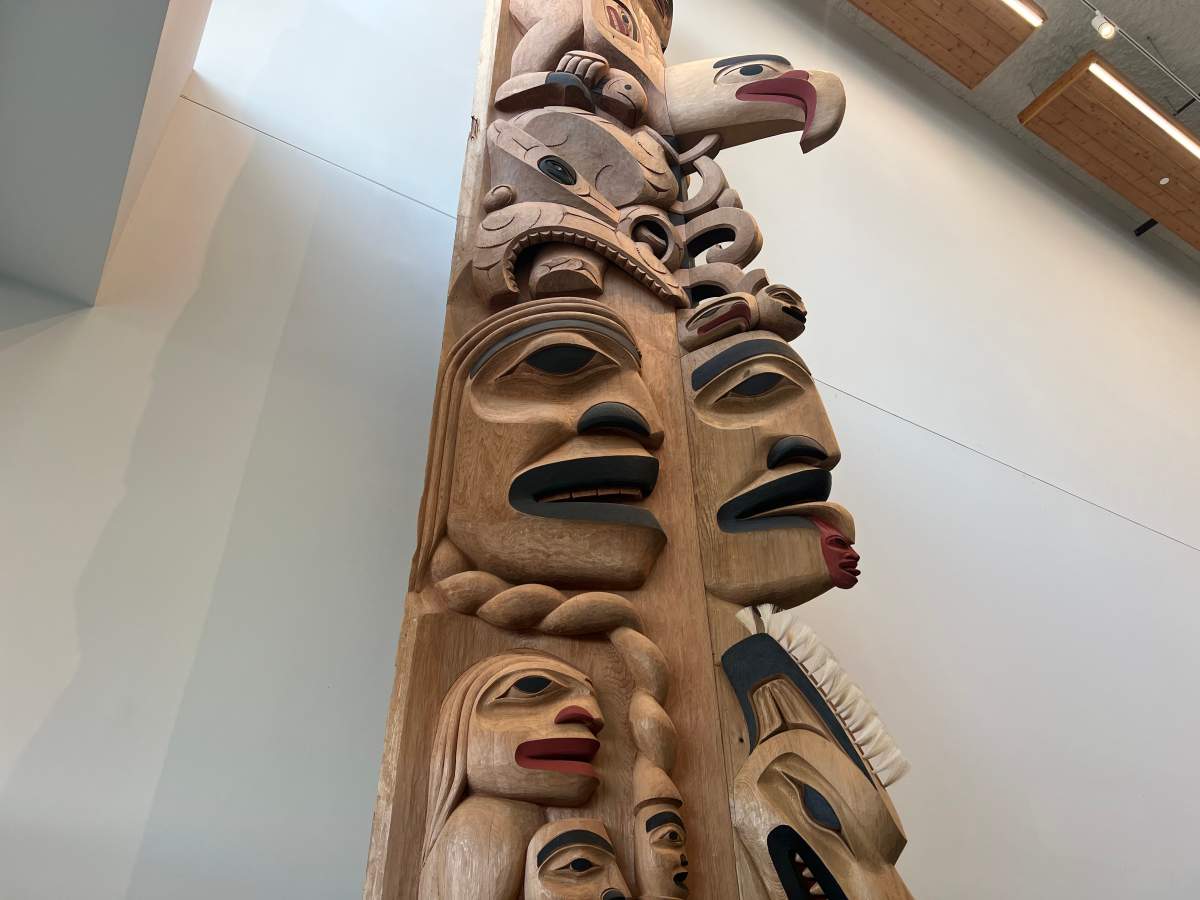Looking for more Indigenous news? Find our stories here.

The totem pole ‘Pacific Song of the Ancestors’ was finally unveiled after eight years of work.
The 25-foot, 2,600-pound pole stands tall inside the northwest corner of Emily Carr’s Vancouver campus and was a collaboration between master carvers Dempsey Bob, Stan Bevan and Lyonel Grant.
“Every time I look at it I’m thinking of Dempsey and Stan and the tradition that they bring to the table,” said the Grant, a Māori carver. “I think of our ancestors and how that collective song and that totem is in harmony.
“At a very fundamental level it’s really a symbol of the connection of our ancestors, and we are just the instruments of those ancestors — it’s deep and spiritual but it’s also just friends working together to create something beautiful that’s going to last lifetimes, long after we’re gone.“
The decision to place the pole inside was intentional. As none of the carvers are from the host nations, nor are totem poles traditionally from Vancouver, the ‘Pacific Song of the Ancestors’ pole was unveiled inside as a permanent installation.
Grant has known Bob for over 25 years and their friendship played a major role in Grant’s involvement in the project. Bob introduced him to Brenda Crabtree, the former director of Aboriginal programs at Emily Carr during a festival in Whitehorse and he was later invited to be a part of the project.
“This whole project is about community, communication and respect for Indigenous art, education and culture,” said Crabtree in a release.
“It’s about connecting with Indigenous artists from other communities, learning about and honouring their artistic traditions, and providing an opportunity for the public to experience this diversity.”
Bob explained how the pole tells the migration story of wolves, eagles and grizzly bears while highlighting the cultural relevance of movement, migration, exploration and connection to the land.
“The movement of the figures points to this southward migration, with the eagle and wolf heads protruding downward, out of the traditional totem pole into a sculptural expression,” he said. “The deeper carvings, the projected figures and the flowing hair make this work come to life.”
The pole is a piece of magnificent Northwest Coast art, but with Grant’s involvement there was a Māori twist. The Māori typically carve pouwhenua (land post) which are stylistically quite different from totem poles, but Grant said that wasn’t something he was concerned with.

Get breaking National news
“It took a while to sort of get my bearings on how I could contribute to it meaningfully, but also complement it,” Grant told Global news. “You wouldn’t want to have a Tlingit and Talhtan carved pole and then a Maori piece in the center.”
Grant’s involvement in the piece meant ensuring his work matched what was already going on and while the carving techniques are similar, the collaboration meant picking up skills from one another.
“I didn’t use it for a year or two and then there was a specific job I needed to do and I began using it more and more and more and it’s caught on and there’s a lot of Māori carvers using the technique again.”
The public can now visit the pole and accompanying exhibition that showcases the pole’s journey. The exhibition is open Sept. 29, 2023, from 7:30 a.m. – 8 p.m.
“The totem is a symbol of sharing,” adds Grant “In so many ways, personalities, tool taking, tool technologies and friendships.”











Comments